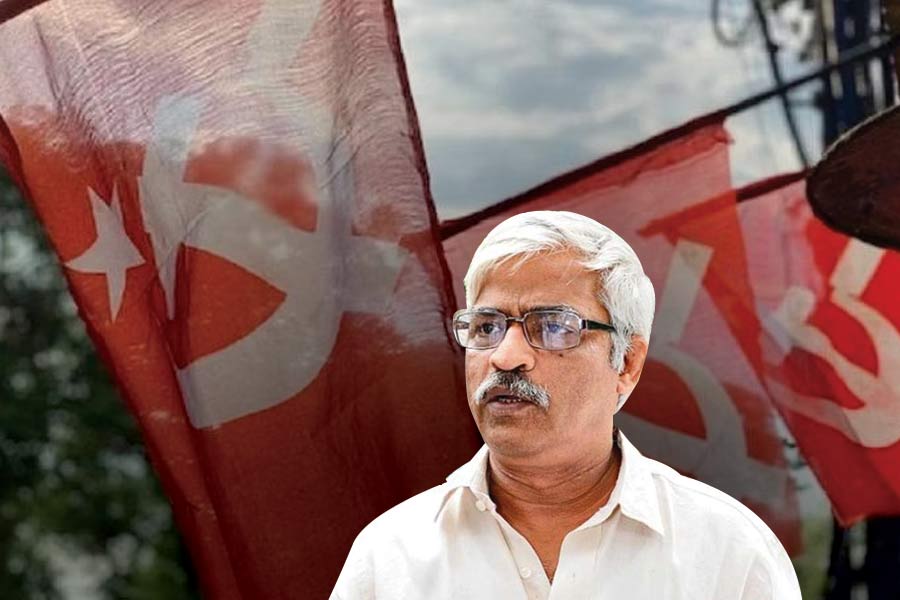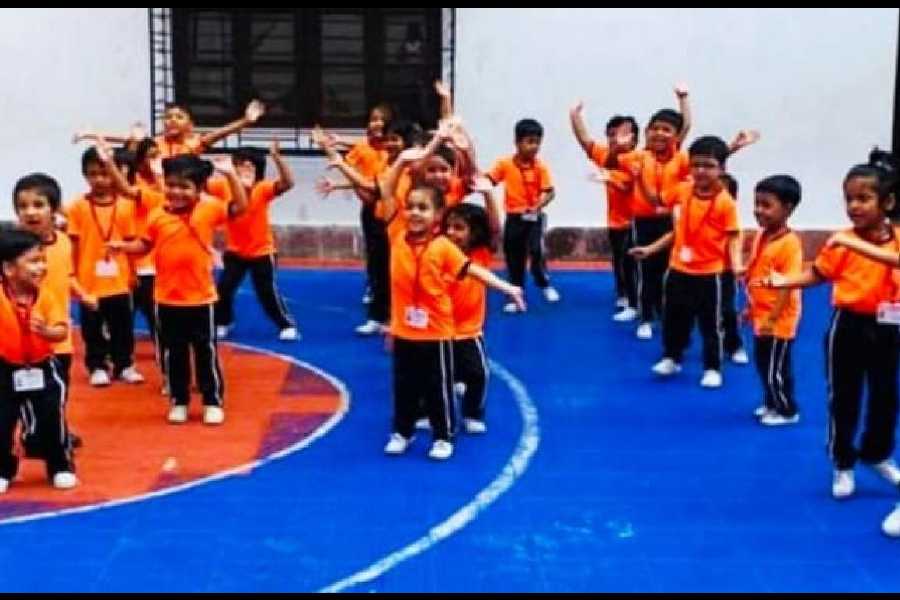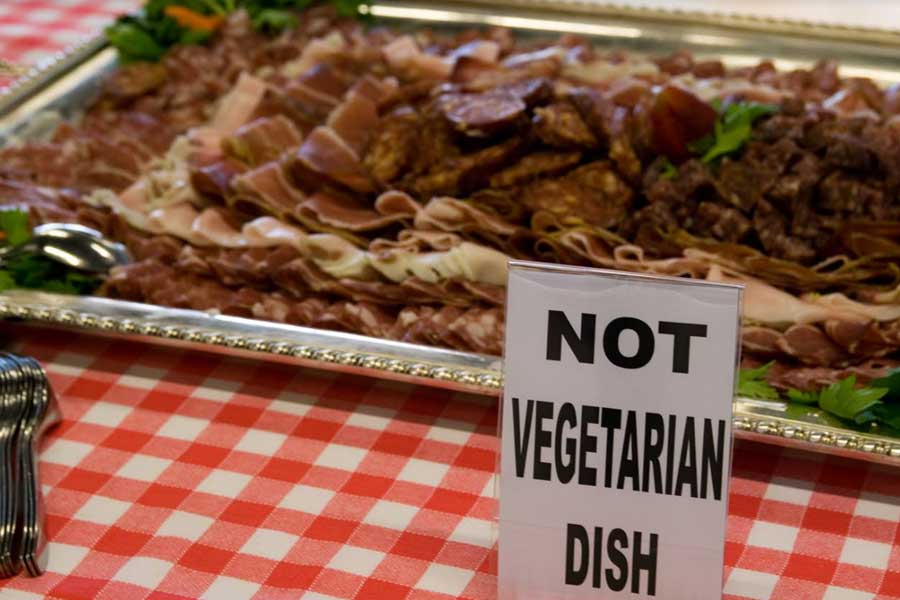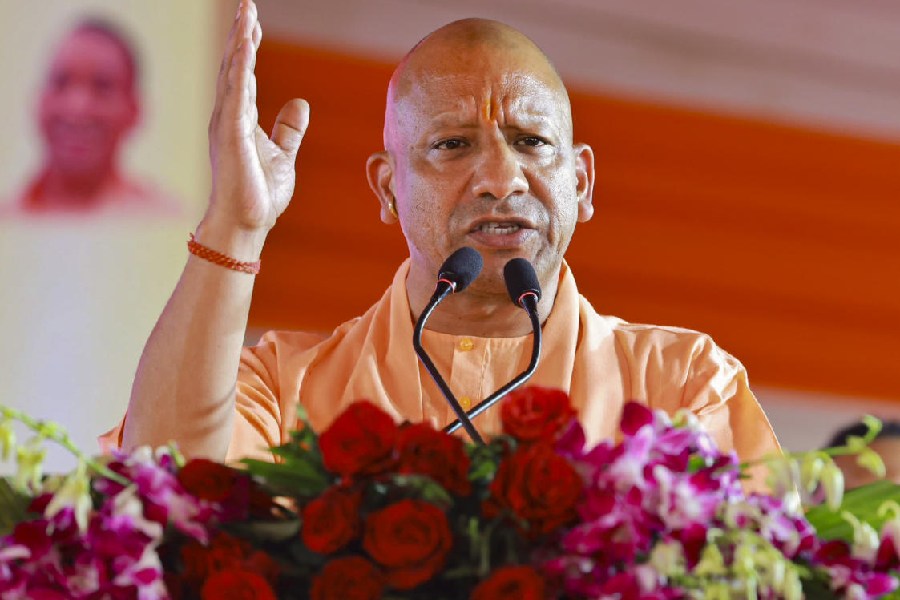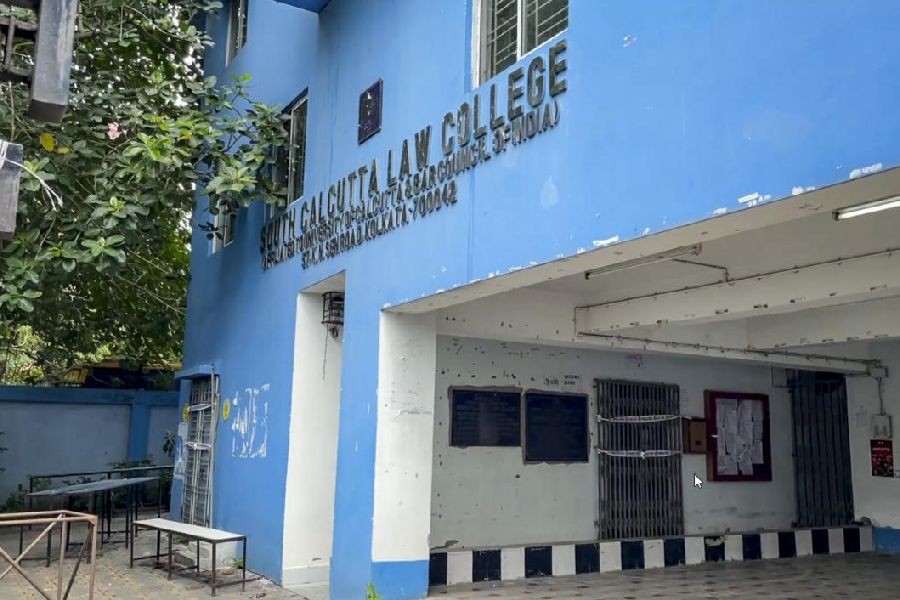I shifted to Santiniketan in 1987, and joined Visva-Bharati as a Reader in painting. Till then, I had worked in Delhi from 1972 at Rashtrapati Bhavan as the art keeper. I wanted to leave Delhi because I wished to be close to Calcutta and a nine-to-five job didn’t suit me.
Rabindranath Tagore’s philosophy, values and way of life always inspired me, and I took up my new assignment with great enthusiasm and missionary zeal. I never thought of furthering my career when I came to Santiniketan. Had I been a careerist, I would never have left Rashtrapati Bhavan.
 |
| Jogen Chowdhury hosts Tina Ambani at his home-cum-studio in Santiniketan |
At Kala Bhavan, I gradually became professor of painting and principal thereafter. Post-retirement, I did not want my term to be extended but I became honorary professor, and now I am an emeritus professor. I have been so for two years.
Throughout my stint in Kala Bhavan, I have been deeply involved in shaping the future of my students, and I have tried to help and nurture them in every way. I feel I have succeeded in inspiring them and instilling self-confidence as well. More than instructing them hands-on in the craft of painting and drawing, I have tried to bring them face to face with the problems of art practice, the importance of history and other complexities. I have discussed these issues threadbare with my students.
In all these 25 years, I have noticed that the environment, tradition and history of Santiniketan have fallen victim to neglect. They have not been protected the way they should have been. I have witnessed the decay of Benodebehari Mukherjee’s murals and the various buildings of the institution. I had once started a cleaning drive with my students. But the gradual deterioration of Santiniketan continues.
For this, those who were responsible for its upkeep are squarely to blame. I feel that the many highly educated and talented personalities connected with Visva-Bharati as well as residents of Santiniketan, who may have been academicians of sterling quality, lacked knowledge of the environment. They had neglected the core area of Santiniketan and its peripheries as well, and they were not aware that these areas should have been protected.
Perhaps the presence of Rabindranath and Abanindranath or even people as enlightened as them would have helped. It is said that in Rabindranath’s time, the hills of Dumka along the Bihar border on the north-west horizon used to be visible from Santiniketan.
Without walls
When I first visited Santiniketan in the 1960s, the canal side used to be deserted. There were no houses there. Magh Mela used be held here then, and I had seen both Nandalal Bose and Kanika Bandyopadhyay at the fair. Magh Mela used to be a big thing then, complete with a merry-go-round, and the handloom board with which I was associated, used to open a stall there.
It was here that I had seen Nandalal Bose going around the mela on a cycle-rickshaw. I met Mohardi (Kanika Bandyopadhyay) moving around on a cycle-rickshaw as well. Balbir Katt, the well-known sculptor who later mysteriously disappeared without a trace, took me around Santiniketan, and we had our meals at the students’ canteen. Santiniketan was without boundaries in those times, and no walls separated the various buildings of the institution.
On later visits too I had noticed that there were no houses around the canal area. There were paddy fields there, and as part of the government’s afforestation drive many saal and sonajhuri trees had been planted. Later, a few enthusiastic Ashramites, myself included, set up a body to protect Santiniketan’s environment and the local wing of Intach supported us. Chidananda Dasgupta was its president and I was a member. He had built a house here, designed by Habibur Rahman.
The state government co-opted the Sriniketan Santiniketan Development Authority (SSDA), and the vice-chancellor of the university no longer had a say in the decision-making. The government insisted that the local MP should be chairman. The body did not take an idealistic approach in keeping with Tagore’s concepts, and clearly showed that it was only interested in developing Santiniketan and turning it into a township. Plots were offered for buildings. The SSDA played a negative role in the whole murky affair.
The Visva-Bharati authorities, despite their erudition and the respect they commanded, had failed to make the right decision, because of their ignorance of environmental issues. Even the Ashramites were not active enough in this matter. Thanks to the huge gap between the two sides, things have come to such a pass today.
The trouble is that whoever moves to Santiniketan clings to it. They are good at keeping alive hoary traditions, ceremonies and rituals and maintaining them sincerely but not in making the right decisions about its future.
Kala Bhavan has been revitalised from time to time, and so it is alive. It still attracts 10 per cent of foreign students. Sangeet Bhavan could have been better and more active. Rabindranath wanted to connect with everybody, and there should have been a return to such a thinking.
The problem is that certain departments have been taken over by the staff and their offspring. An incestuous situation prevails here. Fortunately, this has not happened in Kala Bhavan as not many local people are keen on joining the department.
In the humanities and science departments, the students themselves often become teachers, and their children are employed as staff. So academic standards have declined.
clash of ideas
Santiniketan was once known for the high standards it set. Rukmini Devi Arundale, who had set up Kalakshetra, and Mrinalini Sarabhai of Ahmedabad were all trained in Santiniketan. Even Mrs (Indira) Gandhi, who had impeccable taste, was trained, albeit briefly, in Santiniketan. Satyajit Ray, who could strike the right balance between modernity and tradition, was from here as well. He was a student of Nandalal Bose.
Rabindranath was very particular about the eclectic architectural style of Santiniketan, particularly so in Patha Bhavan, Kala Bhavan and the Uttarayan complex, and Gaganendranath introduced an Indian style for interiors. Suren Kar and Nandalal had given shape to Rabindranath’s tectonic ideas. But the Visva-Bharati authorities have not been able to keep this tradition alive. A certain vice-chancellor may have introduced a certain set of ideas, but the ones who succeeded him may have been totally unaware of these developments. So a clash of ideas followed.
There was a move to declare the campus a heritage zone. The situation demands a high-level permanent body aware of the history, architecture and traditions of Santiniketan. Vice-chancellors wield a lot of power and often try to mould the institution in their own way.
I have been associated with Santiniketan for 25 long years. We hope that the current vice-chancellor will succeed in setting Visva-Bharati on a new course and resolve the problems that beset it. It faces many problems indeed. The science faculty should have a new complex, perhaps on the other side of Kopai river. The arts faculty should also be there so that all the clutter is removed from the Visva-Bharati core campus.
The old core area should be preserved for arts, culture and an international centre. An architectural faculty should be opened where semi-urban and rural architecture and town planning should be taught. A restoration and conservation laboratory along with a masters course should also be opened here.
On full-moon nights at least once a month, Santiniketan should be a no-go zone for all vehicles as a reminder of past traditions. TVs should be switched off in student hostels and they should sing Rabindrasangeet as they did in the past. The last vice-chancellor had started restoring the heritage structures, but he had also constructed multi-storied buildings going against our wishes. He had put up boundary walls as well around the campus although we were against it.
Now, there should be a move to reconnect with the past.


